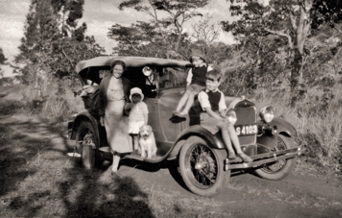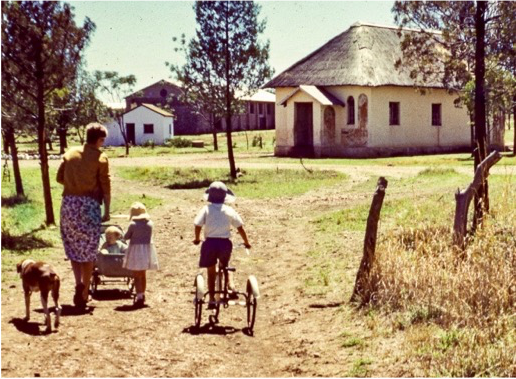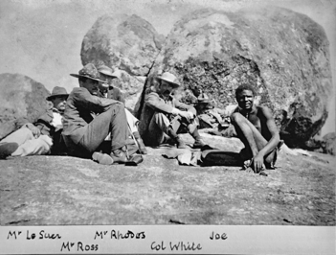Gibbs in Africa
Much has been written about the extensive involvement of the Gibbs family in Southern Europe, Latin America and Australia, but the family appears to have had minimal involvement in the major theatres of British Imperial reach – North America, India and Africa.
Having “African” parents I have always had a different perspective, and have been reminded of this recently due to two events: the first is an exhibition of Cyrene Mission Art in Shoreditch, where my father taught and we lived from 1957-1960; the second is the death of my father last month, peacefully at home in London, leading to much reflection on his life.

My grandfather, Michael McCausland Gibbs, a young curate in London, went out to “Southern Rhodesia” in 1928, with “grandma” and baby Denis. He was apparently consumptive and frequently coughing blood; whether it was that they were keen to be involved in missionary work, or the dry climate of Salisbury being better for his health?
My father was born there the following year, followed by 3 “African” siblings, growing up around Bulawayo as Michael became Archdeacon of Matabeleland, with Cyrene not far away. His teenage years were in Cape Town, coming to England for University at Oxford, and later marrying his Cape Town fiancé. I and my sister were born in London before the call of Africa drew my parents back, initially to teach at Cyrene. My younger brothers were both born in Zimbabwe.

Gibbs in Africa 1934 
Mike at Cyrene 1959

Was it purely coincidence that the same year, 1928, Michael’s 2nd cousin, Humphrey Vicary Gibbs, also emigrated to Southern Rhodesia, buying a farm near Bulawayo. Helping found the National Farmers Union led to politics and in 1959 he was appointed Governor of Southern Rhodesia. With the Unilateral Declaration of Independence in 1965, he held out for 4 years against the regime, before returning to his farm.
Humphrey and Molly had 5 “African” sons and 14 grandchildren, most of whom were also born in Zimbabwe, playing a major part in the country, including Tim as leader of the opposition party (when I hitch-hiked through in 1974 I recall posters saying “Vote for Gibbs”). Humphrey remained in Harare until his death in 1990, but all the sons eventually left for Europe.

But they were not the first family connection in the Zimbabwe region. Arthur Lawley, whose daughter married George Abraham Gibbs, Baron Wraxall of Tyntesfield, went out as Administrator of Matabeleland in 1896, and Lieutenant-Governor of the Transvaal after the Boer War in 1902.

The history of Arthur Lawley (Baron Wenlock) as a colonial administrator in Rhodesia, South Africa, Australia and India is well documented in David Hogg’s book “Tyntesfield and the British Empire”.
This photo shows him (nickname Joe) with Cecil Rhodes, in the Matopos Hills near Cyrene in 1896 waiting to meet the Matabele Chiefs for a peace agreement.
What of other family in Africa?
Noel Martin Gibbs went out to British East Africa to farm in 1906. In the Great War he enlisted in the East African Mounted Rifles and was killed near Mt. Kilimanjaro.
Various spouses from Southern Africa have married into the Gibbs family. But by far the longest African history must go to my mother, Carol Margaret Gibbs, née Williamson, who can trace her South African ancestors back to the earliest European arrivals of Dutch and French Huguenots from 1662, via the Americas from 1644, and from Italy and Scotland. She has no direct European roots for over 3 generations. Now that is a real African!
As anyone who has lived in Africa will understand, once you have spent time in Africa, it never leaves your blood.
